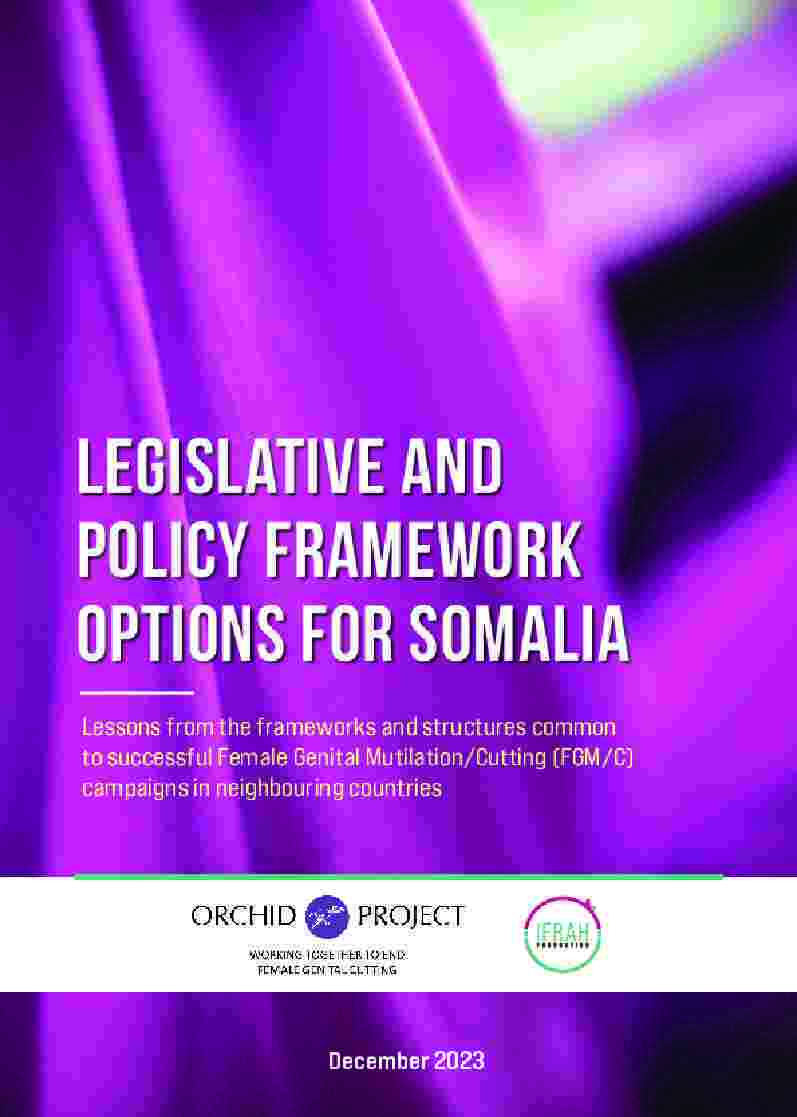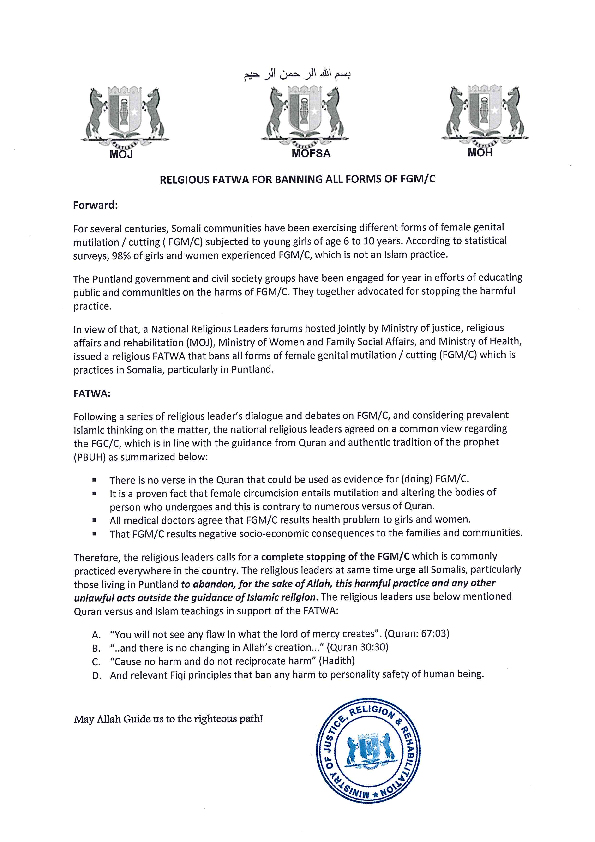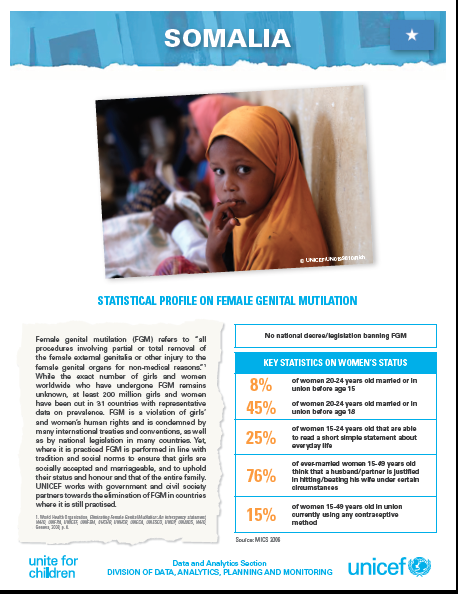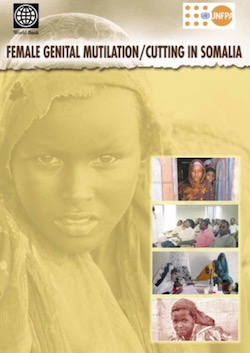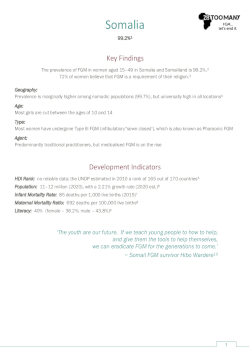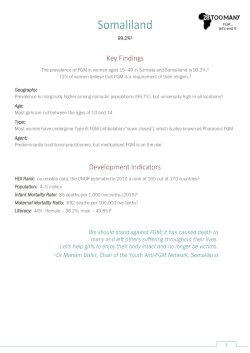Home | Research & Resources | Somalia
Key Findings
The prevalence of FGM among women aged 15–49 in Somalia is 99.2%.
72% of women believe that FGM is a requirement of their religion.
Geography
Prevalence is marginally higher among nomadic populations (99.7%), but universally high in all locations
Age
Most girls are cut between the ages of 10 and 14
Type
Most women have undergone Type III FGM/C (infibulation/‘sewn closed’), which is also known as Pharaonic FGM/C
Agent
Predominantly traditional practitioners, but medicalised FGM/C is on the rise
Distribution of FGM/C across Somalia
In 2006, prevalence in the South/Central Zone was 99.2% and in 2011 in the North-East Zone (Puntland) it was 98% (women aged 15–49). There is no geographical breakdown available for the prevalence in 2020.
Across both Somalia and Somaliland, women who live in rural areas are only slightly more likely to undergo FGM/C than those who live in urban areas. The prevalence is highest among nomadic women, but is universally high (over 98%) among women living in all areas.
76.4% of women believe that FGM/C should continue and 18.9% believe that it should not.
While support for Type III (Pharaonic) FGM/C has declined in recent years, other types of FGM referred to as ‘Sunni’ remain popular. More than four in five women in the oldest age group experienced Pharaonic cutting, compared to less than half of women in the youngest age group.
Trends in FGM Prevalence in Somalia
FGM/C prevalence among women aged 15–49 has remained broadly consistent for some time.
Breaking down the 2020 data by age group shows that the prevalence for women aged 45–49 is 99.8%, while for the youngest age group it is 98.8%, but some women over the age of 15 may yet be cut.
FGM/C Legislation in Somalia
There is currently no national law in place banning FGM/C in Somalia. New national legislation is being drafted and will go through a consultation phase with stakeholders during 2019. In November 2013, 18 religious leaders in Puntland signed a fatwa against FGM/C, which was witnessed by various ministers. In March 2014, the president of Puntland approved an official policy outlawing all forms of FGM/C; however, parliamentary legislation is not yet in place. In February 2018 the Ministry of Religious Affairs in Somaliland issued a fatwa banning the most severe type of FGM/C, Type III (infibulation/'sewn closed').
Development Indicators
Population Growth
11–12 million (2019), with a 2.21% growth rate (2020 est.)
Infant Mortality
85 deaths per 1,000 live births (2015)
Maternal Mortality
692 deaths per 100,000 live births
HDI Rank
Estimated at 165 out of 170 countries (2010)


.jpeg)
.jpg)
_cover.jpg)
_cover.jpg)
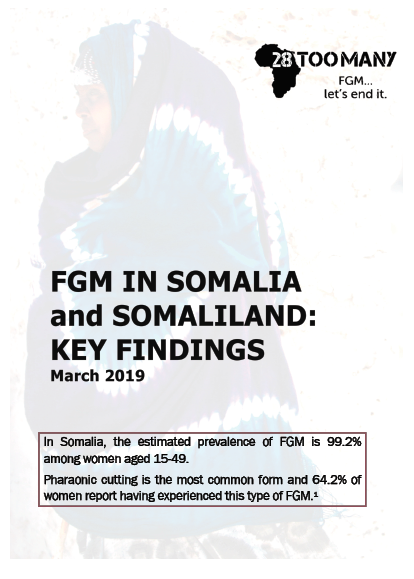
_arabic_cover.jpg)
_cover_sized_for_website.jpg)
_cover_sized_for_website.jpg)
_arabic_cover.jpg)
_somali_cover.jpg)
_somali_cover.jpg)
_arabic_cover.jpg)
_somali_cover.jpg)
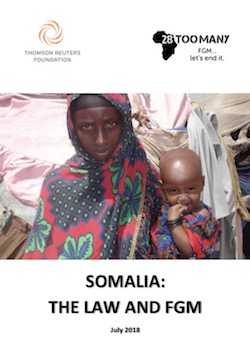

_arabic_cover.jpg)
